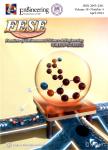Association between heavy metals and antibiotic-resistant human pathogens in environmental reservoirs: A review
作者机构:Department of Environmental Sciences Oregon State University Corvallis OR 97331 USA School of Chemical Biological and Environmental Engineering Oregon State University Corvallis OR 97331 USA School of Biological and Population Health Sciences Oregon State University Corvallis OR 97331 USA
出 版 物:《Frontiers of Environmental Science & Engineering》 (环境科学与工程前沿(英文))
年 卷 期:2019年第13卷第3期
页 面:41-57页
核心收录:
学科分类:12[管理学] 0830[工学-环境科学与工程(可授工学、理学、农学学位)] 1201[管理学-管理科学与工程(可授管理学、工学学位)] 08[工学]
基 金:funding support from the Oregon State University start-up funds
主 题:Zinc Cadmium Copper Lead E. coli P. aeruginosa
摘 要:Antibiotic resistance in human pathogens can proliferate under selective pressures. Heavy metals in environmental reservoirs may contribute to selecting antibiotic-resistant strains. To determine the associations between heavy metals and antibiotic resistance, a literature review was conducted to systematically collect and categorize evidence for co-occurrence of resistance to heavy metals and antibiotics within human pathogenic bacteria in water, wastewater, and soil. In total, 42 publications adhered to inclusion criteria. Across the reservoirs, zinc and cadmium were the most commonly observed heavy metals associated with resistance to antibiotics. Pseudomonas aeruginosa and Escherichia coli were the most commonly studied bacteria with reported co-occurrence of resistance to several heavy metals and antibiotic classes. As co-selecting agents, prevalence of heavy metals in the environment can proliferate resistance to heavy metals and antibiotics through co-resistance and crossresistance mechanisms. In comparing different reservoirs, soils and sediments harbor higher heavy metal and antibiotic resistances compared to water environments. Additionally, abiotic factors such as pH can affect the solubility and hence, the availability of heavy metals to bacterial pathogens. Overall, our review demonstrates heavy metals act as co-selecting agents in the proliferation of antibiotic resistance in human pathogens in multiple environmental reservoirs. More studies that include statistical data are needed to further describe the exposure-response relationships between heavy metals and antibiotic resistance in different environmental media. Moreover, integration of culturebased and molecular-based methods in future studies are recommended to better inform our understanding of bacterial co- and cross-resistance mechanisms to heavy metals and antibiotics.



